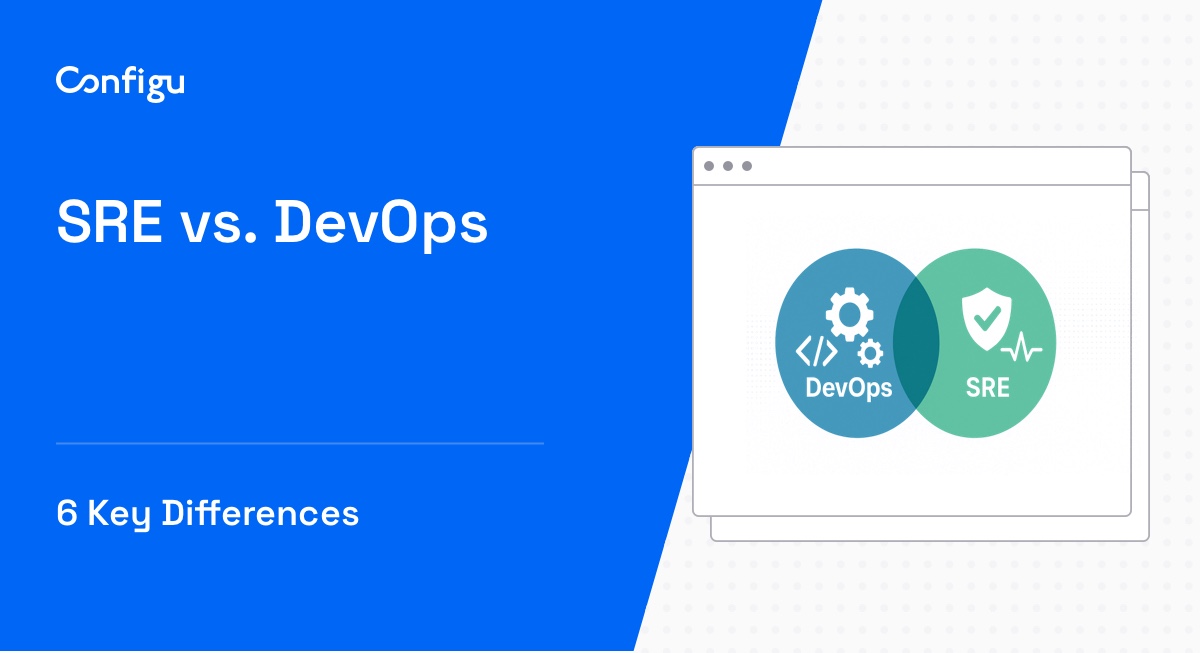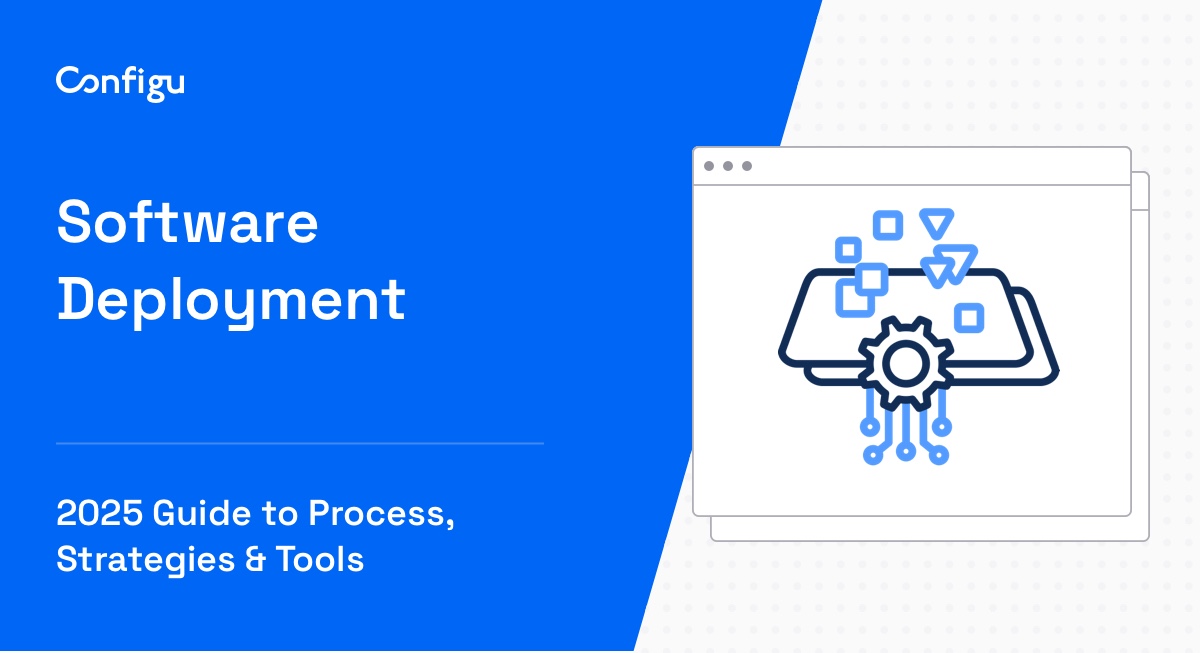What Is Platform Engineering?
Platform engineering is the practice of building and maintaining internal software platforms to enable software development teams to deliver applications effectively. It focuses on creating developer-friendly systems which improve developer productivity by providing reusable components, tools, and processes.
These platforms often integrate various functions necessary for cloud-based and on-premises environments, allowing developers to focus more on coding and less on infrastructure management. By establishing a cohesive framework, platform engineering reduces complexity in development workflows, simplifying processes across multiple environments.
This discipline is centered around the needs of the development team, prioritizing ease of use, stability, and feature-rich platforms. The goal is to minimize the friction developers face when launching new systems or applications, leveraging automation and consistency to improve efficiency.
This is part of a series of articles about DevOps pipelines
In this article:
The Evolution from DevOps to Platform Engineering
Platform engineering builds upon the principles of DevOps, but it addresses specific challenges that have emerged as software development and deployment processes have grown more complex. While DevOps focuses on fostering collaboration between development and operations teams to accelerate delivery, platform engineering aims to simplify these workflows by centralizing tools, processes, and infrastructure into a cohesive platform.
The shift toward platform engineering reflects the need for scalability and operational efficiency in increasingly distributed and dynamic environments. As organizations adopt microservices, containerization, and cloud-native architectures, the demand for consistent, reusable, and automated platforms has grown.
DevOps alone may not sufficiently address the complexity of modern development pipelines, particularly when managing large teams or diverse environments. Platform engineering complements DevOps by establishing a structured foundation where developers can self-serve essential tools and resources. It emphasizes creating internal platforms that abstract operational complexities, allowing developers to focus on building and deploying applications.
Key Principles of Platform Engineering
Implementing platform engineering requires adopting the following principles.
Treating the Platform as a Product
Treating the platform as a product means understanding the platform’s users, who are the developers within the organization. This requires actively gathering feedback and iterating on platform features to meet user needs, similar to how consumer products are developed. Prioritizing usability and reliability, platform teams must foresee user requirements to deliver a satisfying development experience.
Self-Service and Automation
Self-service platforms support developers by allowing them to configure their development environments and deploy applications without operational bottlenecks. Automation in platform engineering helps reduce manual intervention, decrease error rates, and accelerate deployment processes. Automation strategies help in enforcing consistency, ensuring that development teams can build, test, and scale their offerings.
Focus on Developer Experience
Providing a smooth, intuitive interface for development tasks helps simplify workflows and improves productivity. Developers encounter fewer barriers, resulting in faster and more reliable software releases. This requires constant assessment and improvement of tools and resources to align with developers’ needs. Improving developer experience involves the integration of user-friendly interfaces, comprehensive documentation, and support mechanisms.
Standardization and Reusability
By implementing standardized practices, processes, and components, organizations simplify their technology stack, enabling easier management and maintenance. Standardization reduces complexity, supports compliance with regulatory requirements, and improves compatibility across various development projects. Reusability enables teams to leverage existing components, reducing development time and improving efficiency.
Tips From the Expert
In my experience, here are tips that can help you better implement platform engineering principles:
- Define clear platform personas: Identify and document the various types of users (e.g., frontend developers, backend engineers, DevOps teams) who will interact with the platform. Tailor tools and workflows to meet the unique needs of each persona to improve adoption and usability.
- Introduce platform usage guidelines: Create concise, developer-friendly documentation outlining best practices for using the platform. Include examples, troubleshooting guides, and FAQs to minimize onboarding friction and promote proper utilization.
- Modularize platform components: Design the platform as a collection of modular services or microservices. This allows teams to adopt only the pieces they need, reducing the learning curve and promoting incremental adoption.
- Adopt a service catalog approach: Build a service catalog within the platform to list pre-configured, reusable components (e.g., CI/CD pipelines, infrastructure templates). This encourages self-service and accelerates development processes.
- Enable platform extensibility: Provide APIs or plugins to allow developers to extend platform capabilities. This flexibility empowers teams to address specific needs while ensuring the core platform remains stable.
Platform Engineering vs DevOps vs Site Reliability Engineering (SRE)
Platform engineering, DevOps, and Site Reliability Engineering (SRE) share a focus on improving software delivery, but they serve different roles:
- DevOps emphasizes collaborative development and operations to improve software lifecycle efficiency.
- Platform engineering provides a foundational framework, improving this collaboration by offering a standardized platform.
- SRE focuses primarily on maintaining the reliability and scalability of production systems, employing techniques to manage service quality.
The distinction lies in scope and approach. Platform engineering emphasizes creating unified environments for development teams, fostering consistency and ease of use. DevOps highlights culture and practices for cross-functional team integration, and SRE targets operational reliability.
Why You Need Platform Engineering
Platform engineering offers numerous advantages for organizations to simplify software development and deployment processes:
- Increased developer productivity: By providing reusable tools, automated processes, and self-service capabilities, platform engineering minimizes repetitive tasks, allowing developers to focus on creating and delivering features.
- Improved consistency across environments: Standardized practices and reusable components ensure uniformity in development, testing, and production environments, reducing errors and deployment issues.
- Accelerated time to market: Simplified workflows and reduced operational dependencies enable faster application development and deployment, giving organizations a competitive edge.
- Enhanced developer experience: A well-designed platform with intuitive interfaces, robust automation, and reliable support fosters developer satisfaction and reduces barriers to productivity.
- Operational efficiency: By centralizing infrastructure management and leveraging automation, platform engineering decreases operational overhead and optimizes resource usage.
- Scalability: Unified platforms can adapt to the needs of growing teams and complex architectures, ensuring smooth operations in dynamic environments.
Challenges of Platform Engineering
In practice, it can be difficult to successfully engineer platforms. Some of the reasons for this include:
- Managing technical debt: This involves addressing the accumulated compromises made during software development that can impede future advancements. In platform engineering, the risk of technical debt arises from maintaining outdated systems and technologies to ensure continuity. This debt can slow down development processes and degrade the platform’s performance over time if not managed properly.
- Ensuring platform security: Platforms often hold significant data and provide various access points. Strong security measures are necessary to protect against unauthorized access and protect sensitive information. Platform engineers must integrate security into the development lifecycle, implementing practices such as encryption, access controls, and regular security audits.
- Balancing innovation with stability: Continuous innovation is essential for competitive advantage but introduces risks, such as system instability. Platform teams must carefully manage new feature rollouts and experimental technologies to ensure they do not compromise platform reliability and performance.
Best Practices for Effective Platform Engineering
Platform engineers should implement the following practices to achieve their goals and ensure successful platforms.
1. Start Small and Iterate
Starting small minimizes risk and enables continuous improvement. By developing a minimum viable platform, teams can test assumptions and gather feedback early, enabling incremental improvements that align with user needs. This approach supports adaptive, responsive growth, ensuring the platform evolves in a controlled, sustainable manner.
Iteration allows platform engineers to refine features based on actual usage, supporting the resolution of any issues swiftly. This iterative process requires discipline in managing changes and improvements to maintain platform integrity. It emphasizes learning from each development cycle, promoting a culture of agility and responsiveness.
2. Engage with Developers Regularly
Regular engagement with developers is crucial for platform engineering, as it ensures the platform evolves according to user needs. Constant communication helps uncover pain points, gather feedback on existing features, and identify areas for improvement. This interaction ensures alignment with developer expectations and improves the development experience.
Engaging developers requires structured feedback mechanisms such as surveys, meetings, and pilot tests. By incorporating developer insights, platform teams can prioritize improvements that improve usability and performance. Continuous collaboration fosters a sense of ownership and partnership, creating a supportive environment for both platform engineers and developers.
3. Measure and Monitor Key Metrics
Measuring and monitoring key metrics is essential for understanding platform performance and identifying areas for improvement. Metrics related to usage, performance, and developer satisfaction provide insights into the platform’s effectiveness. These measurements guide data-driven decisions and prioritize development initiatives, ensuring resources are effectively allocated.
Platforms must incorporate tools to capture detailed metrics, enabling informed assessments of current operations. Regularly reviewing metrics helps platform teams maintain awareness of emerging trends and potential issues. This focus on measurement underpins strategic planning and improves the platform’s ability to meet organizational goals and developer needs.
4. Ensure Security and Compliance
Integrating security throughout the platform’s design and execution phases guards against potential vulnerabilities and ensures adherence to industry regulations. Compliance is crucial for legal reasons and builds confidence among stakeholders, improving the platform’s reliability and trustworthiness.
Security and compliance activities must be continuous, adapting to evolving threats and regulatory standards. Regular audits, policy updates, and security patches are necessary to maintain a secure platform. By embedding these practices into everyday processes, organizations safeguard their platforms, reduce risk, and support sustainable, compliant growth.
5. Foster a Culture of Collaboration
Collaboration bridges the gap between platform teams and developers, ensuring that platforms meet real-world needs. By fostering open communication and shared responsibility, organizations can align goals, reduce misunderstandings, and encourage collective problem-solving.
Collaboration also promotes knowledge sharing, enabling teams to learn from each other and build on collective expertise. Regular workshops, cross-functional meetings, and feedback loops help maintain alignment between platform engineers and development teams.
Platform Engineering with Configu
Configu is a configuration management platform comprised of two main components:
Configu Orchestrator
As applications become more dynamic and distributed in microservices architectures, configurations are getting more fragmented. They are saved as raw text that is spread across multiple stores, databases, files, git repositories, and third-party tools (a typical company will have five to ten different stores).
The Configu Orchestrator, which is open-source software, is a powerful standalone tool designed to address this challenge by providing configuration orchestration along with Configuration-as-Code (CaC) approach.
Configu Cloud
Configu Cloud is the most innovative store purpose-built for configurations, including environment variables, secrets, and feature flags. It is built based on the Configu configuration-as-code (CaC) approach and can model configurations and wrap them with unique layers, providing collaboration capabilities, visibility into configuration workflows, and security and compliance standardization.
Unlike legacy tools, which treat configurations as unstructured data or key-value pairs, Configu is leading the way with a Configuration-as-Code approach. By modeling configurations, they are treated as first-class citizens in the developers’ code. This makes our solution more robust and reliable and also enables Configu to provide more capabilities, such as visualization, a testing framework, and security abilities.



